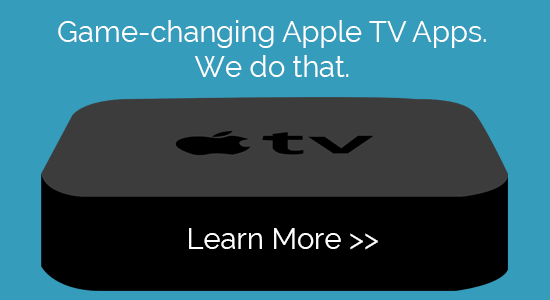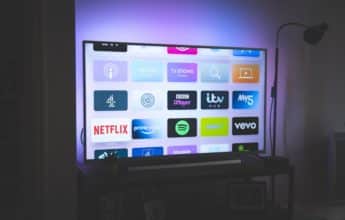Announced yesterday, the new Apple TV may have what it takes to transform the TV space. With a myriad of new features and functions introduced, the platform will be much more appealing to consumers and developers alike.
Since its initial launch, one of the greatest downfalls of Apple TV – despite its success – has been its lack of available apps. But that’s about to change.
Apple CEO Tim Cook prefaced the introduction of the product by saying “we believe the future of TV is apps.” Aiming to expand the less-than-robust collection of content currently available on Apple TV – a mere 65 channels versus 2000+ on Roku and Amazon Fire TV – Apple has introduced:
- tvOS – a brand new operating system based on iOS that uses familiar frameworks and APIs like Xcode
- App Store for Apple TV – this will help expedite the (currently very slow) process for app submission and approval on Apple TV
These very crucial additions to Apple TV will open up the floodgates for content, allowing developers to create new channels and apps for the platform much more easily and quickly.
This move by Apple can potentially change the very makeup of the connected TV space, significantly boosting an already popular product and challenging other industry frontrunners like Roku and Amazon Fire TV head-on. Namely, we’ll see the following have a huge impact.
More Selection, More Competition
As it stands now, Apple TV only offers 65 channels. This number pales in comparison to Amazon Fire TV and Roku, which boast over 2000, including specialty and niche programming. The inclusion of an app store similar to the one for iPhone and iPad will invite a slew of new apps and make the content offerings for the Apple TV more robust and extensive. It’s likely that this will accelerate competition between Apple TV and the other industry giants as the discrepancy between content availability narrows (given the success of the App Store on iPhone/iPad, we may even see Apple TV’s content offerings surpass the competition in the very near future).
Reduce Barriers For New Content Providers
Apple TV has been significantly more difficult for developers and content providers to deal with than many alternative platforms. Apple has been introducing channels very infrequently (every few months), which partially explains why there are much fewer options than Roku or Amazon Fire TV. This has also meant that Apple TV has lacked specialty programming and niche programming that its competitors offer.
The introduction of tvOS – which will feel comfortable to developers as it’s based on iOS – as well as new developer tools and APIs, will significantly reduce barriers for developers and content providers that have historically found it difficult to break into the platform, from major networks to specialty content producers. Opening up the platform for developers and simplifying the submission process via the App Store will allow for more channels and other apps to be added to Apple TV easily and frequently.
Better, Custom User Experiences
Apple TV has historically employed a templated approach to their channels, which has limited the possibilities for applications. With the introduction of tvOS, as well as new APIs and other developer tools, developers will have more freedom to build incredible, custom user experiences that aren’t subject to the limitations of the templates. The presentation yesterday provided a glimpse into some of the possibilities for custom UI and experiences, showcasing the apps that Netflix and HBO have built.
The Siri-enabled remote is also likely to have a big impact on user experience. Users can hit the Siri button on the remote to prompt a variety of different actions, from searching for programs featuring their favorite actors to jumping between scenes in movies and more. As developers become more familiar with the system, we’ll see fresh and unique functions introduced that take full advantage of this feature.
Moving Beyond TV & Movies
Since tvOS is a native platform, there is huge flexibility for developers to create a very diverse range of apps. Part of the presentation given yesterday demonstrated some of the application types we might see: games that work with the Apple TV remote and include swing gestures, similar to the Wii; shopping and e-commerce apps that allow users to purchase right from their TVs; and even interactive live sports channels that let users watch 2 games at once or pull up stats as they’re watching the game (MLB.com is releasing an application that was demoed yesterday, and NHL will be following in 2016). With these enhanced capabilities, we’re bound to see a very robust collection of diverse applications introduced on Apple TV in the near future.
The Bottom Line
The new Apple TV is essentially a complete overhaul of the old platform, which in itself is already popular. Most notably, it’s likely the tvOS development will become widespread as this new operating system, combined with the introduction of an App Store and tools that make Apple TV more developer friendly, make the creation and submission of applications much easier. Furthermore, the addition of these capabilities means that Apple TV’s greatest downfall – a lack of available content – will make the platform even more appealing to consumers.
The race for the top spot in the connected TV space is about to become even tighter.







